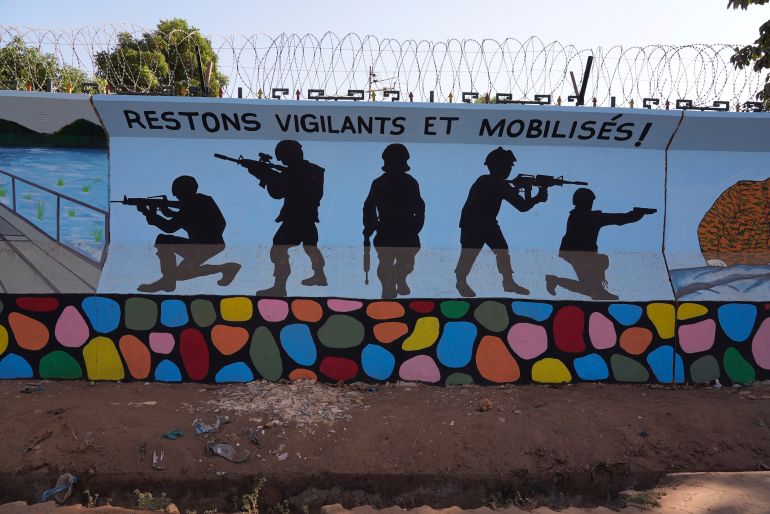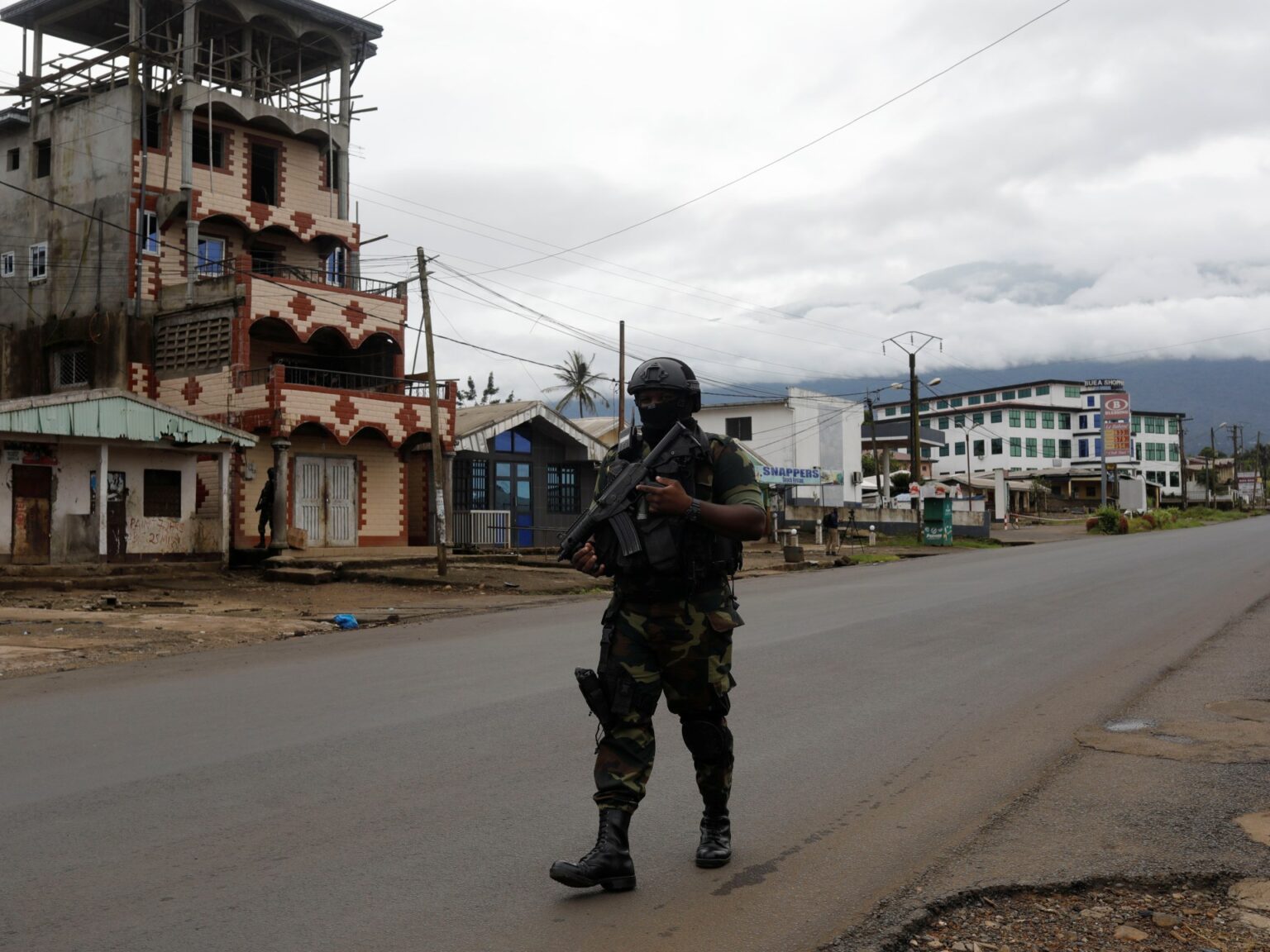African countries have again topped the list of the world’s most ignored crises, with nearly all of the worst-funded humanitarian challenges located in the continent in 2024, according to a new study out this week.
Released on Tuesday, the report by the nonprofit Norwegian Refugee Council (NRC) lists Cameroon, Mozambique and a host of other African nations as some of the most burdened by violence and displacement, but also the most invisible to donors.
The news comes as the United States, formerly the world’s biggest aid provider, massively cut development funding this year. Aid agencies received only half of what they needed in 2024, and experts say further shrinking aid will likely make 2025 even more bleak for people in need.
Eight African emergencies were previously ranked as the most ignored in 2023 as well.
What does the report say?
Millions of people who have been displaced and face food insecurity or lack shelter are receiving little aid because of “donor fatigue”, poor media coverage and little-to-no political resolution, according to the NRC’s 2024 Most Neglected Crises report.
The report defined countries in crisis as those that host or have more than 200,000 displaced people, and which have been declared to be in severe crisis emergencies.
Of 34 countries analysed, the most “invisible” according to the NRC report were: Cameroon, Ethiopia, Mozambique, Burkina Faso, Mali, Uganda, Iran, Democratic Republic of the Congo, Honduras and Somalia.
Aside from funding, there was little progress on effective conflict resolution, disaster prevention and diplomatic engagement in all the affected countries, the report added.
In general, aid funding dropped overall in 2024, the NRC noted.
“The shortfall between what was required to meet humanitarian needs in 2024 and what was delivered was a staggering $25 billion, meaning over half of all needs went unmet,” the report stated.
Why are African humanitarian emergencies ignored?
“Donor fatigue” and growing waves of nationalistic policies within traditional donor countries are causing the richest countries to reduce foreign aid funding, experts say. A lack of proximity to emergencies, analysts add, also affects attention.
“Too many crises across the continent remain in the shadows – ignored because they don’t make headlines, or because they are not seen as of immediate strategic interest to international partners,” Christelle Hure, NRC’s head of advocacy in West and Central Africa, told Al Jazeera.
“Crises that knock on Europe’s door – as happened in 2015 [with mass immigration] – tend to receive the greatest media attention, while those far away remain not only out of sight but also out of mind,” Hure said.
Which are the most neglected African emergencies?
Cameroon
The West-Central African nation tops the list of the world’s most neglected crises in 2024.
In the English-speaking northeast and northwest regions of Cameroon, a protracted civil war which began in 2017 is continuing. That year, thousands took to the streets to protest against the appointment of French-speaking judges, and in general, alleged discrimination from the Francophone-majority government.
Heavy crackdowns to suppress the protests soon saw armed groups springing up, declaring independence. The government in Yaounde, in turn, declared war. Both the rebels and government forces have targeted civilians. Hundreds have died, and thousands more are displaced internally or have fled to neighbouring Nigeria.
“The violence there is largely ignored because it’s not a direct threat to the central government,” Beverly Ochieng, a security analyst with United Kingdom-based intelligence firm Control Risks, told Al Jazeera, adding that little has been done to negotiate peace. “There was a feeling initially that some of the secessionist leaders were trying to lobby Donald Trump to support their cause but they’ve just not received any attention.”
Meanwhile, in the northern Lake Chad Basin region, also connected to Nigeria, violence by the armed group, Boko Haram, has continued for years, displacing thousands. A US-backed joint force of the Lake Chad Basin countries has largely collapsed since the military governments in Niger and Chad pulled out, leaving Cameroon, Nigeria and Benin. Washington’s shrinking of security presence and operations in African nations is likely to further destabilise the arrangement.
Cameroon itself hosts refugees fleeing Boko Haram in Nigeria, as well as those from the Central African Republic fleeing fighting between two political groups. Together, some 1.1 million people are internally displaced, and 500,000 are refugees.
Despite this, Cameroon’s displacement crisis was mentioned in fewer than 30,000 articles in English, Spanish, French and Arabic in 2024, compared with the Ukraine war, which was mentioned in 451,000 articles, according to the NRC. Only 45 percent, or $168m of the $371m required, was raised to fund aid in the various crises, according to the United Nations. The government, too, is under fire for seeming indifference: President Paul Biya, 82, and in power since 1982, is often criticised for spending most of his time away in Switzerland.
Ethiopia
The aftershocks of the Tigray war in the country’s north (2020-2022) merged with new intercommunal fighting in the Oromia and Amhara regions, creating a potent mix of crises which has seen 10 million people pushed out of their homes nationwide, the NRC report noted.
The Fano armed group, which claims to represent the interests of the Amhara people, one of Ethiopia‘s significant ethnic groups, is fighting the federal army, which tried to disarm it after they both fought Tigrayan forces during the war. The Oromo Liberation Group, meanwhile, says it is seeking independence for the Oromo people, Ethiopia’s largest ethnic group. Both groups have been met with force by the government in Addis Ababa, which has launched air strikes. Dozens of civilians have died in the fighting.
In addition, drought and flooding have compounded food shortages. In the southern Gofa zone, heavy rains caused two landslides on July 21 that killed more than 200 people, the worst such landslides in the country.
Mozambique
The Southern African country appears on the list for the first time this year. Political upheaval following hotly contested October elections saw protesters who supported the independent opposition candidate, Venancio Mondlane, shot dead by Mozambican state security. About 400 people died in the violence, according to local media tallies.
Separately, ongoing attacks by an armed group with affiliations to ISIL (ISIS-Mozambique) in northern, oil-rich Cabo Delgado flared up in 2024. Violence has continued there since 2022 and has seen thousands displaced, while also disrupting a billion-dollar oil and gas investment project. Government forces working with regional troops from the Southern African Development Community (SADC) and Rwandan soldiers were able to push the fighters back in 2023, allowing many displaced people to return. However, because the fighters are deeply embedded in local communities, the conflict has turned volatile again very quickly.
Prone to cyclones due to its location in the Indian Ocean, Mozambique was hit by Cyclone Chido, which also devastated the French Indian Ocean territory of Mayotte, in December. The storm made landfall in the northern region of Mozambique, which is facing armed conflict. Some 120 people were killed, and about 155,000 buildings were damaged or destroyed.
Burkina Faso and Mali
Since 2015, more than two million people have been displaced in Burkina Faso because of the activities of violent armed groups like the Jama’at Nasr al-Islam wal-Muslimin (JNIM), which wants to create a caliphate. Several of those groups now control close to half of the country, despite efforts by the military-led government to push them back with support from Russian forces.
The rebels have held civilians suspected of supporting government forces under siege for more than two years, blocking entries and exits to now nearly 40 towns and cities. Massacres of villagers, however, have been blamed on both armed groups and government forces who are accused of attacking civilians perceived to be aiding the fighters.
Neighbouring Mali is ranked fourth on the neglected crises list and faces a similar situation. Analyst Ochieng attributes shrinking aid to the three military-led countries of the West African Sahel, including Niger, partly to the hostile stances towards Western powers of the leaders there. All three have cut off Western allies which previously provided both military and humanitarian aid, particularly France. Their hostility has extended to humanitarian groups, sometimes perceived as being tied to Western nations, further limiting aid.
“These military leaders are focused on economic development and they don’t even want to be seen as not being able to provide for their people … that makes it very difficult for any donors to approach them to provide help, or even for aid agencies to assess what the actual needs are,” Ochieng said.

Other African emergencies
- Uganda: Although the country itself does not face large-scale internal violence, Uganda is listed because it hosts the largest number of refugees in Africa – close to two million people from neighbouring South Sudan, Sudan and the DRC. Shrinking aid, the NRC warned, could escalate friction between local communities and refugees.
- Democratic Republic of the Congo: Decades of violence by a slew of armed groups vying to control the country’s rich deposits of minerals, and more recently, offensives by the rebel M23 group, have seen hundreds of thousands displaced in eastern DRC between 2024 and early 2025. The outbreak of Mpox in the same region in 2023 contributed to disruption. The African Union and the US are currently leading peace talks between the DRC government and neighbouring Rwanda, accused of backing M23. Other deadly attacks from groups like the Allied Democratic Forces (ADF) often go unnoticed.
- Somalia: Entrenched violence from the al-Shabab armed group, which has been active for decades, as well as drought, continues to displace people in the East African country. It received “dangerously low” funding in 2024, the NRC said.
Will Trump’s aid cuts further affect these crises?
US President Donald Trump’s sweeping aid cuts after he took office in January, and his decision to dismantle the United States Agency for International Development (USAID), the agency that distributes it, have prompted fears that humanitarian emergencies could worsen in 2025.
As the world’s biggest aid donor, the US distributed about $70bn in foreign aid yearly, particularly for healthcare. In 2024, the most aid went to Ethiopia, Jordan, DRC, Somalia, Yemen, Afghanistan, Nigeria, South Sudan and Syria.
With those funds either reduced or halted altogether, aid workers worry that emergencies on the African continent could worsen.
Other major donors are also making cuts, observers warn. In February, the UK cut foreign aid by 0.2 percent, while the Netherlands will slash 2.4 billion euros ($2.72bn) in aid from 2027. France, Germany, Belgium, Switzerland and Sweden have all announced reductions to their aid budgets since.
Hule of the NRC said the African Union (AU) must take the lead in resolving the continent’s multiple crises through political negotiations. The bloc’s Peace and Security Council, tasked with anticipating and mitigating conflict, has previously been criticised as being too slow to act.
“What is urgently needed today isn’t just more funding – it’s clear political commitment, not only from donors but crucially from the African Union and its member states,” Hule said.
Countries, she added, also need to reduce administrative and regulatory barriers that hamper aid workers. “Easing these constraints, in close collaboration with authorities and the African Union, would greatly enhance the efficiency and impact of our collective response,” she added.
Read the full article here

